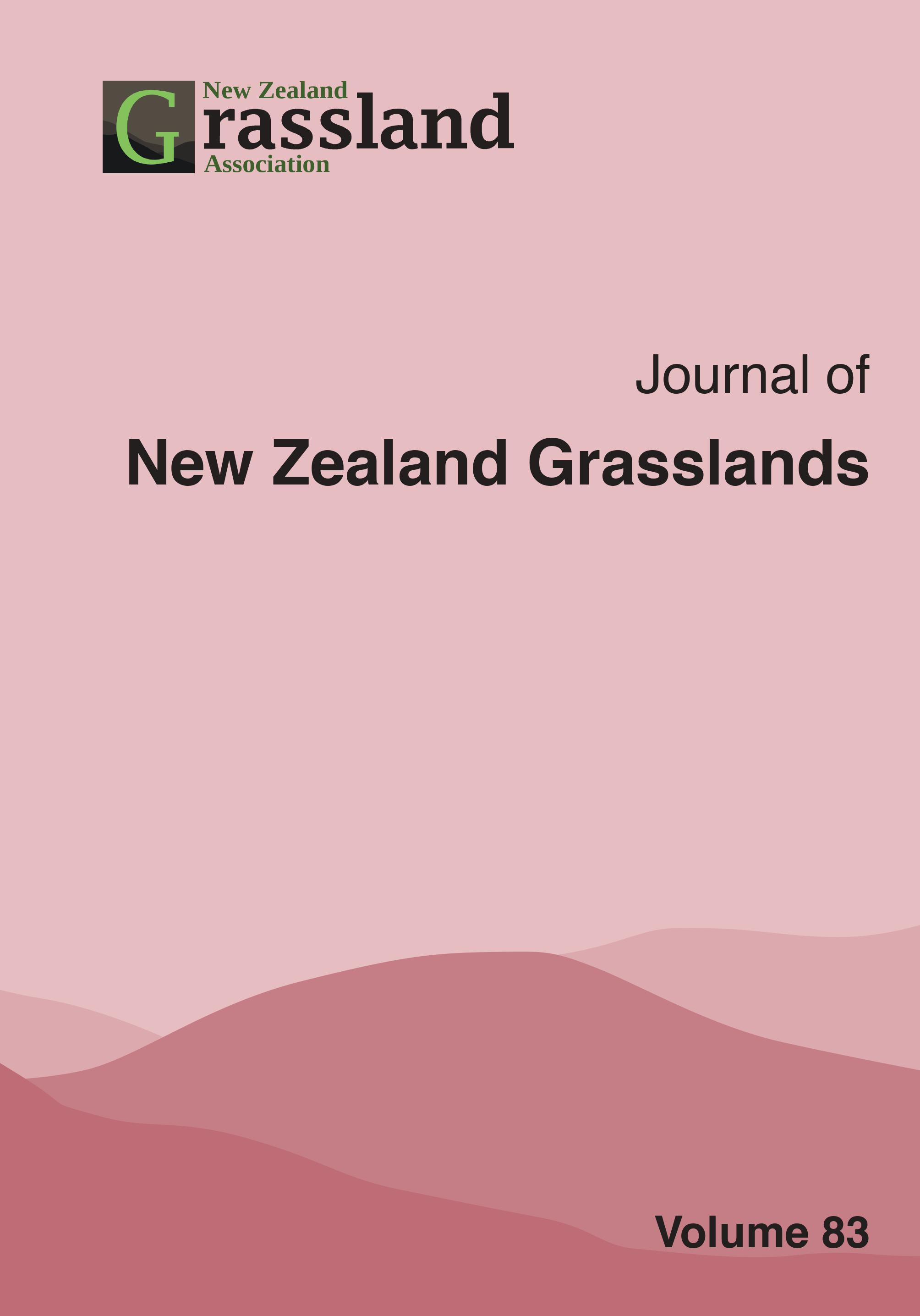Winter crop choice and body condition loss change the eco-efficiency of sheep flocks
DOI:
https://doi.org/10.33584/jnzg.2021.83.3503Abstract
Lamb survival (ewe reproductive performance) and lamb growth are key levers to changing eco-efficiency, particularly in hill country systems. New research has highlighted reproduction losses when feeding some winter crop options such as fodder beet. Current research findings are used to understand the impact of changes in reproductive performance of sheep flocks caused by body condition change and winter forage crop choices on whole farm eco-efficiency. Eight farms were anonymously selected from an existing database, four with ‘low rainfall’ and four with ‘high rainfall’, averaging 590 and 1090 mm/annum respectively to represent the cool temperate climates of southern New Zealand. Ewe and lamb survival, and lamb liveweight gain to weaning were altered to reflect the impacts of either losing or retaining body condition in late gestation, either on a fodder beet or brassica diet in mid-late gestation. Ewes retaining body condition with fodder beet scenarios were fed a supplement added to ensure adequate protein nutrition using a combination of Lucerne hay, soy meal, and urea. General adjustments made to maintain pasture use similar to the original farms included adjusting lamb sales date, supplement making, stocking rate and autumn nitrogen use. Eco-efficiency was reduced using fodder beet as a winter forage as greenhouse gas emissions were increased per unit of product. The loss of condition score during mid to late pregnancy also led to a reduction in eco-efficiency, though this was more severe when feeding fodder beet. The impacts of fodder beet were mitigated if the diet was balanced for protein. Nitrogen and phosphorus loss from soil was low, and reduced under fodder beet feeding conditions, due to the smaller area of cropping than traditional brassicas.
Downloads
Downloads
Published
How to Cite
License

This work is licensed under a Creative Commons Attribution-ShareAlike 4.0 International License.
Copyright
This work is licensed under a Creative Commons Attribution-Non Commercial-NoDerivatives 4.0 International License. Rights granted to the New Zealand Grassland Association through this agreement are non-exclusive. You are free to publish the work(s) elsewhere and no ownership is assumed by the NZGA when storing or curating an electronic version of the work(s). The author(s) will receive no monetary return from the Association for the use of material contained in the manuscript. If I am one of several co-authors, I hereby confirm that I am authorized by my co-authors to grant this Licence as their agent on their behalf. For the avoidance of doubt, this includes the rights to supply the article in electronic and online forms and systems.




